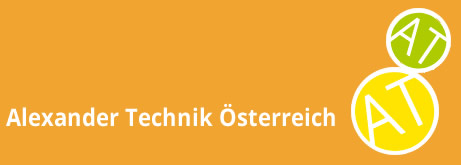Science And Research
For more than 100 years the Alexander Technique has helped many people with health problems and is presumably one of few methods that can effectively sustain health.
There always have been notable advocates of medicine who even became Nobel Prize winners, for example Nikolaas Tinbergen (Nobel Prize in Medicine) who is known as the co-founder of behavioral research.
In his 1973 acceptance speech for the Nobel Prize, Nikolaas Tinbergen spoke about the Alexander Technique and his own experiences with it: „We provide convincing improvements in specific areas, namely high blood pressure, respiration, REM sleep movement, general mood improvements, mental vigilance, stamina against strains, and to refine oneself as one were to adjust a stringed instrument.” 1)
In the 50s, Dr. Wilfred Barlow examined the effects of the Alexander Technique in health. He published the results in 1973 in “The Alexander Principle.“ 2), where he describes positive effects of the Alexander Technique on diseases such as spondylosis, arthritis, breathing problems, backache, etc.
Later in the 1970s, Professor Franc Pierce Jones (with support from the US Health Service and the Carnegie Foundation from the Institute for Experimental Psychology at Tuft University) systematically examined the effects of the Alexander Technique on the quality of human movements. He combined special conditions with very advanced examination methods and could show that the Alexander Technique can replace harmful movement patterns through health preserving movements. “There is no other method, which can achieve the same results.” 3)
Examinations to see the effect of the Alexander Technique on disease symptoms
Back pain
In a 2008 study, 4) the researcher arranged 579 patients with chronic or recurrent back pain in different groups. The control group received the usual treatment for back pain in England, which consists of pain medications and pain injections. Another group would be treated with six appointments therapeutic massages, the third group obtained six lessons with the Alexander Technique and the last group received 24 lessons. Furthermore, half of the participants in each group should have successfully completed a trainings program, either in the form of 30-minute sessions of fast-walking five times a week, or an activity equivalent to that. The participants were advised to care and be mindful of their back.
The analysis of the study showed that the sport trainings program hardly influenced the participants’ pain while the Alexander Technique worked much better. A year after the study, the subjects from the control group suffered from back pain from anywhere between 21 to 28 days. Those patients, who had received 24 lessons with the Alexander Technique, only experienced three to 28 days of back pain. The group who had received six lessons had back pain between 11 to 28 days. Finally, the group who had received massages, suffered from back pain between 14 to 28 days.
The researchers clearly saw the advantage of the Alexander Technique in contrast to prescribed massages, was that the clients could independently execute this method. 5)
Stuttering
In her 1999 doctorate, Gerlinde Lamprecht summarizes the following results of the Alexander Technique and stuttering: “in these areas such as sense of self, tone regulation, use of the body, respiration, and personality development, it is clear that the Alexander Technique met the expected demands to the highest quantity in each case. (...) In fact, through its procedure, it combined the demands of a holistic core concept for voice and speech therapy. 5) Dorothy Schulte could show in her 2003 psychological field study that after 30 individual lessons with the Alexander Technique, the stuttering rates of researched patients clearly dropped (from 2.5% to 4.6%, between 0.3% to 0.7%).6)
Parkinson's Disease
By 1997, C. Stallibrass could declare positive impacts on patients with Parkinson’s disease in a field study: “The Alexander Technique decreases depression and improves dealing with limitations.” 7) The Hessian team for health education researched the following results in their 2004 evaluation of the effectiveness of the Alexander Technique: “In the present evaluation of the effect of the Alexander Technique, it shows that students, who experienced, on average, 20 instructional lessons, had substantial changes of improved health and quality of life. This development touched both the physical and psychic dimensions according to the health evaluations of those interviewed.” 8)
References
- Nikolaas Tinbergen Nobel Lecture, December 12, 1973, Ethology and Stress Diseases, in: Nobel Lectures, Physiology or Medicine 1971.1980, Editor Jan Lindsten, World Scientific Publishing Co., Singapore, 1992, S.123.
- Wilfred Barlow: Die Alexandertechnik: Gesundheit und Lebensqualität durch richtigen Gebrauch des Körpers, München Kösel, 1983, passim.
- Frank Pierce Jones: Freedom to Change, The Development and Science oft he Alexander Technique, Mouritz 2003. 1976 erstmals erschienen unter dem Titel "Body Awareness in Action".
- Little, P. et al.: Randomised controlled trial of Alexander technique lessons, exercise, and massage (ATEAM) for chronic and recurrent back pain. British Medical Journal, Online-Publikation (19.08.2008) © goFeminin.de GmbH
- Gerlinde Lamprecht: Die F.M. Alexandertechnik, eine ganzheitliche Methode zur Wiedererlangung der natürlichen Körperkoordination und ihre Bedeutung für die sprachtherapeutische Praxis, Peter Lang Verlag, Frankfurt 1999
- Dorothea Schulte: Die F.M. Alexandertechnik als Ansatz in der Stottertherapie, in Forum Logopädie Heft 5 (17) September 2003, S.11
- Chloe Stallibrass: An evaluation of the Alexander Technique fort he management of disability in Parkinsons´s disease a preliminary study, in Clinical Rehabilitaion 1997, 11 p.8.
- Hessische Arbeitsgemeinschaft für Gesundheitserziehung, Evaluation der subjektiven Wirksamkeit der Alexandertechnik, 2004. (http://www.hage.de/Hintergrund/2004/4-alexander.htm)


